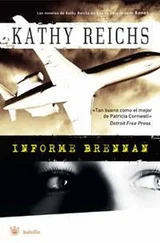Reichs, Kathy - Death Du Jour
Здесь есть возможность читать онлайн «Reichs, Kathy - Death Du Jour» весь текст электронной книги совершенно бесплатно (целиком полную версию без сокращений). В некоторых случаях можно слушать аудио, скачать через торрент в формате fb2 и присутствует краткое содержание. Жанр: Старинная литература, на английском языке. Описание произведения, (предисловие) а так же отзывы посетителей доступны на портале библиотеки ЛибКат.
- Название:Death Du Jour
- Автор:
- Жанр:
- Год:неизвестен
- ISBN:нет данных
- Рейтинг книги:3 / 5. Голосов: 1
-
Избранное:Добавить в избранное
- Отзывы:
-
Ваша оценка:
- 60
- 1
- 2
- 3
- 4
- 5
Death Du Jour: краткое содержание, описание и аннотация
Предлагаем к чтению аннотацию, описание, краткое содержание или предисловие (зависит от того, что написал сам автор книги «Death Du Jour»). Если вы не нашли необходимую информацию о книге — напишите в комментариях, мы постараемся отыскать её.
Death Du Jour — читать онлайн бесплатно полную книгу (весь текст) целиком
Ниже представлен текст книги, разбитый по страницам. Система сохранения места последней прочитанной страницы, позволяет с удобством читать онлайн бесплатно книгу «Death Du Jour», без необходимости каждый раз заново искать на чём Вы остановились. Поставьте закладку, и сможете в любой момент перейти на страницу, на которой закончили чтение.
Интервал:
Закладка:
“Sounds admirable.”
He started to say something, caught himself. “I suppose.”
“Would Dr. Jeannotte know anything about Élisabeth Nicolet or her family?”
“If anyone can help you it will be Daisy Jean.”
He gave me her number and we promised to get together soon.
A secretary told me Dr. Jeannotte would be holding office hours between one and three, so I decided to drop in after lunch.
It takes analytical skills worthy of a degree in civil engineering to understand when and where one is allowed to leave a car in Montreal. McGill University lies in the heart of Centre-Ville, so even if one is able to comprehend where parking is permitted, it is almost impossible to find a space. I found a spot on Stanley that I interpreted to be legal from nine to five, between April 1 and December 31, except from 1 to 2 P.M. on Tuesdays and Thursdays. It did not require a neighborhood permit.
After five reversals of direction and much manipulation of the steering wheel, I managed to wedge the Mazda between a Toyota pickup and an Oldsmobile Cutlass. Not a bad job on a steep grade. When I got out I was sweating despite the cold. I checked the bumpers. I had at least twenty-four inches to spare. Total.
The weather was not as frigid as it had been, but the modest rise in temperature had come with an increased dampness. A cloud of cold, moist air pressed down on the city, and the sky was the color of old tin. A heavy, wet snow began to fall as I walked downhill to Sherbrooke and turned east. The first flakes melted when they touched the pavement, then others lingered and threatened to accumulate.
I trudged uphill on McTavish and entered McGill through the west gate. The campus lay above and below me, the gray stone buildings climbing the hill from Sherbrooke to Docteur-Penfield. People hurried about, shoulders rounded against the cold and damp, books and packages shielded from the snow. I passed the library and cut behind the Redpath Museum. Exiting the east gate, I turned left, and headed uphill on rue Universitie, my calves feeling as though I’d done three miles on a Nordic Track. Outside Birks Hall I nearly collided with a tall young man walking head down, his hair and glasses coated with snowflakes the size of luna moths.
Birks is from another time, with its Gothic exterior, carved oak walls and furniture, and enormous cathedral windows. It is a place that inspires whispering, not the chatting and swapping of notes that occurs in most university buildings. The first-floor lobby is cavernous, its walls hung with portraits of grave men looking down in scholarly self-importance.
I added my boots to the row of footwear trickling melted snow onto the marble floor, and stepped over for a closer look at the august artworks. Thomas Cranmer, Archbishop of Canterbury . Good job, Tom. John Bunyan, Immortal Dreamer . Times had changed. When I was a student abstract reverie in class, if detected, got you called on and humiliated for being inattentive.
I climbed a winding staircase, past two sets of wooden doors on the second floor, one to the chapel, the other to the library, and continued to the third. Here the elegance of the lobby gave way to signs of aging. Patches of paint peeled from walls and ceiling, and here and there a tile was missing.
At the top of the stairs I paused to get my bearings. It was strangely quiet and gloomy. On my left I could see an alcove with double doors opening on to the chapel balcony. Two corridors flanked the alcove, with wooden doors set at intervals along each hall. I passed the chapel and started up the far corridor.
The last office on the left was open but unoccupied. A plaque above the door said “Jeannotte” in delicate script. Compared with my office, the room looked like St. Joseph’s Oratory. It was long and narrow, with a bell-shaped window at the far end. Through the leaded glass I could see the administration building and the drive leading up to the Strathcona Medical-Dental Complex. The floor was oak, the planks buffed yellow by years of studious feet.
Shelves lined every wall, filled with books, journals, notebooks, videotapes, slide carousels, and stacks of papers and reprints. A wooden desk sat in front of the window, a computer workstation to its right.
I looked at my watch. Twelve forty-five. I was early. I moved back up the hall and began to examine the photos lining the corridor. School of Divinity, Graduating Class of 1937, and 1938, and 1939. Stiff poses. Somber faces.
I had worked my way to 1942 when a young woman appeared. She wore jeans, a turtleneck, and a wool plaid shirt that hung to her knees. Her blond hair was cut blunt at the jawline, and thick bangs covered her eyebrows. She wore no makeup.
“May I help you?” she asked in English. She tipped her head and the bangs fell sideways.
“Yes. I’m looking for Dr. Jeannotte.”
“Dr. Jeannotte’s not here yet, but I expect her any time. Can I do something for you? I’m her teaching assistant.” With a quick gesture, she tucked hair behind her right ear.
“Thank you, I’d like to ask Dr. Jeannotte a few questions. I’ll wait, if I may.”
“Uh, oh, well. O.K. I guess that’s O.K. She’s just, I’m not sure. She doesn’t allow anyone in her office.” She looked at me, glanced through the open door, then back at me. “I was at the copy machine.”
“That’s fine. I’ll wait out here.”
“Well, no, she could be a while. She’s often late. I . . .” She turned and scanned the corridor behind her.
“You could sit in her office.” Again the hair gesture. “But I don’t know if she’ll like that.”
She seemed unable to make a decision.
“I’m fine here. Really.”
Her eyes moved past me, then back to my face. She bit her lip and did another hair tuck. She didn’t seem old enough to be a college student. She looked about twelve.
“What did you say your name is?”
“Dr. Brennan. Tempe Brennan.”
“Are you a professor?”
“Yes, but not here. I work at the Laboratoire de Médecine Légale.”
“Is that the police?” A crease formed between her eyes.
“No. It’s the medical examiner.”
“Oh.” She licked her lips, then checked her watch. It was the only jewelry she wore.
“Well, come in and sit down. I’m here, so I think it’s O.K. I was just at the copy machine.”
“I don’t want to cause . . .”
“No. It’s no problem.” She gave a follow-me jerk of her head and entered the office. “Come in.”
I entered and took a seat on the small sofa she indicated. She moved past me to the far end of the room and began reshelving journals.
I could hear the hum of an electric motor, but couldn’t see the source. I looked around. I’d never seen books take up so much space in a room. I scanned the titles immediately across from me.
The Elements of Celtic Tradition. The Dead Sea Scrolls and the New Testament. The Mysteries of Freemasonry. Shamanism: Archaic Techniques of Ecstasy. The Kingship Rituals of Egypt. Peake’s Commentary on the Bible. Churches That Abuse. Thought Reform and the Psychology of Totalism. Armageddon in Waco. When Time Shall Be No More: Prophecy Belief in Modern America . An eclectic collection.
Minutes dragged by. The office was uncomfortably warm, and I felt a headache begin at the base of my skull. I removed my jacket.
Hmmmmmm.
I studied a print on the wall to my right. Naked children warmed themselves at a hearth, skin glowing in firelight. Below was written After the Bath , Robert Peel, 1892. The picture reminded me of one in my grandmother’s music room.
I checked the time. One-ten.
“How long have you worked for Dr. Jeannotte?”
She was bending over the desk but straightened quickly at the sound of my voice.
Читать дальшеИнтервал:
Закладка:
Похожие книги на «Death Du Jour»
Представляем Вашему вниманию похожие книги на «Death Du Jour» списком для выбора. Мы отобрали схожую по названию и смыслу литературу в надежде предоставить читателям больше вариантов отыскать новые, интересные, ещё непрочитанные произведения.
Обсуждение, отзывы о книге «Death Du Jour» и просто собственные мнения читателей. Оставьте ваши комментарии, напишите, что Вы думаете о произведении, его смысле или главных героях. Укажите что конкретно понравилось, а что нет, и почему Вы так считаете.






